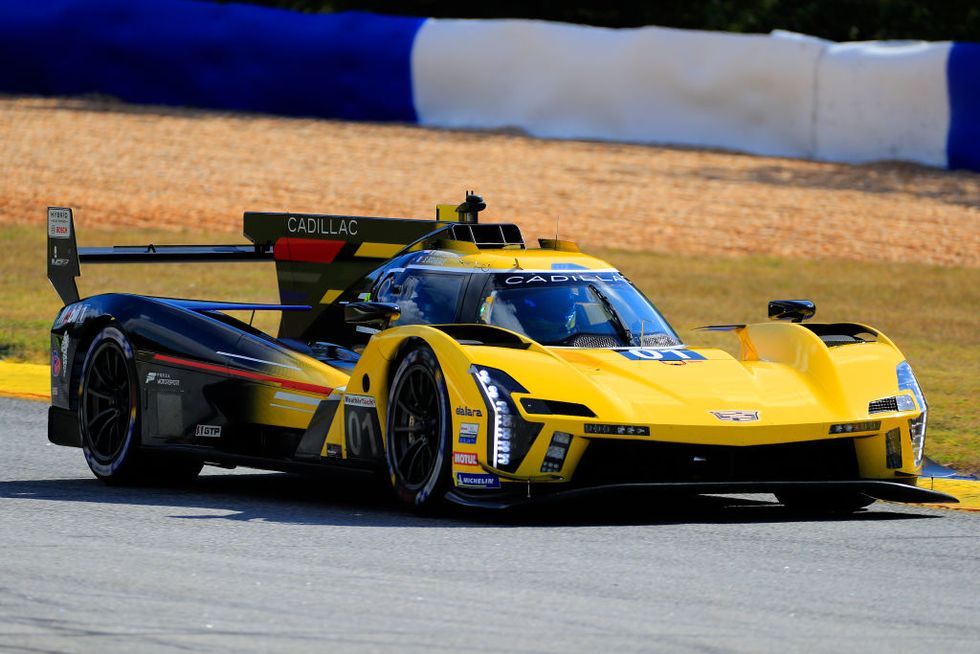Bouncing along a rutted, red clay trail in my Subaru Outback during the Petit Le Mans, I discovered parts of Michelin Raceway Road Atlanta’s infield not seen in 26 years of covering the race. Trying to find parking during the 10-hour event to visit friends who were trackside, I had to venture deep into the dense thicket of pines at the center of the 2.5-mile track in north Georgia and ultimately into the weeds near a ditch to find a spot.
The track looked like Woodstock on wheels. The jammed infield featured parked vehicles of all types from myriad manufacturing origins. Campsites sprouted up like mushrooms in every direction. A swarm of fans filled the hillsides and fences when not galavanting from corner to corner on all manner of personal vehicles,
It’s not just hype from talking heads on TV. IMSA’s new Grand Touring Prototype hybrids have resonated with fans. The season-opening Rolex 24 at Daytona drew its largest crowd ever (like Road Atlanta it was mostly jammed into the infield). In between, crowd sizes during the nine-race schedule were noticeably increased.
So where does IMSA go from the inaugural season of a new cost-effective brand of endurance racing that has pitted factory teams from Acura, BMW, Cadillac, and Porsche against one another?
First, there are some sobering numbers, starting with the Rolex 24. IMSA’s marquee event drew an average of 360,000 viewers to its network coverage on NBC and USA. Although the viewership peaked at over one million, the average represents roughly 10% of a typical NASCAR Cup Series audience and about half of a typical IndyCar event.
The Daytona 500, by the way, drew over eight million viewers.
The Petit Le Mans, meanwhile, averaged 400,000 viewers, falling well below the record 1.1 million who watched the Formula 1 race at Singapore. But at least the viewership of the Petit enjoys a high percentage of the coveted younger demographic.
Compared to last year, the Petit viewership reportedly fell, but that can be attributed to a new emphasis on Peacock coverage, which remains problematic for many fans. (Once again, a network is trying to pressure cable providers to carry a channel by angering racing fans who can’t get it or to encourage fans to sign up for streaming. Some things never change.)
According to IMSA officials and the networks covering the WeatherTech Championship, the TV numbers for much of the nine-race season have increased by 20 percent. As far as attendance goes, infields at road circuits such as Daytona or Road Atlanta are like crowds at street races. It always seems like there are more than one might expect. (The Sebring 12-hour and Long Beach Grand Prix are notable exceptions.)
Reliable sources at Road Atlanta, where the traffic to the infield was shut down two hours after the start of the race, confirm ticket sales on race day were around 25,000.
It’s not written in stone that one racing series has to numerically beat all the others to be considered successful or major league. The cars and their performance, the drivers’ skill, if not swagger, and the scope of major events determine what’s major league or not. By these criteria, IMSA is now on a similar plane as NASCAR and IndyCar.
The GTP cars that came out of the LMDh regulations are some of the most sophisticated in the world, despite a common hybrid platform that gives the class long-term legs in terms of cost to manufacturers. Most importantly, fans could see some of the same cars that raced at the Le Mans 24-hour at each of the IMSA events. The teams represent some of the best and best known in the racing business.
What can get IMSA to the next level? The fans who follow the sport already know the answers. The WeatherTech Championship needs more GTP cars, which are in the forecast; the LMDh cars and teams must start competing equally with the Hypercars at Le Mans and in the World Endurance Championship; and some of the Hypercars, preferably the Le Mans-winning Ferrari 499, need to start showing up for the Rolex 24 and the Petit Le Mans.
Meanwhile, next year’s absence of the U.S. on the WEC schedule may be a positive in terms of leaving “the field” to the GTPs.
None of the desired developments are outside the realm of possibility. Although Ferrari showing up is about like expecting a 499 to land on the moon, testing is underway by Lamborghini, which launches its GTP program next season. The new Hypercar of Aston Martin is slated to join in 2025.
The inaugural class of GTP cars are a long way from the bulky, early (and ugly) Grand Am prototypes or the DPi class of V8 ground pounders that preceded GTP. The schism between the Grand Am Series and the American Le Mans Series that ended in 2014 now seems prehistoric.
Happy days? Well, judging by the fans at Road Atlanta, fun days at least.
Share your thoughts on the state of IMSA, the GTP class, and all other things sports car racing-related in the comments below.
Read the full article here



